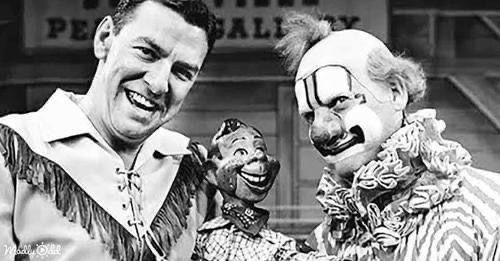
The Howdy Doody Show aired from 1947 until 1960 with remarkable success, leaving a lasting impact on children’s programming.
The show’s iconic red-haired marionette puppet, Howdy Doody, remains entrenched in the memories of many, symbolizing the era’s pioneering children’s entertainment.
Among the show’s key figures, Bill Smith stands out as its star. Smith not only voiced the character but also conceived it during his tenure as a radio announcer for WNBC. On December 27, 1947, his presentation at the Puppet Playhouse on NBC garnered such enthusiastic feedback that it led to the creation of a dedicated show for Howdy Doody, complete with a physical puppet crafted by Frank Paris.
Despite Smith’s initial assessment of the puppet as “the ugliest puppet imaginable,” audiences embraced the show. While the backdrop was originally intended to be a circus tent, producers Victor F. Campbell and E. Roger Muir opted for a western setting instead.
Due to the show’s western themes and Smith’s Buffalo, New York origins, he earned the moniker “Buffalo Bill,” a nickname that endured throughout his career.
In the show’s early days, tensions arose between Bill Smith and Frank Paris, the puppet’s creator, over ownership rights. Paris, frustrated by the situation, infamously absconded with the puppet when approached by Macy’s department store to create replicas. In response, the producers improvised, airing an episode where Howdy Doody underwent a fictional plastic surgery.
A new puppet, crafted by Velma Wayne Dawson and Mel Shaw, replaced the original, garnering favor among fans as the definitive rendition.
Alongside Howdy Doody, the show featured memorable characters such as Phineas T. Bluster, Inspector John J. Fadoozle, and Clarabell, the mute clown.
Initially filmed in black and white, The Howdy Doody Show transitioned to technicolor in 1955, further enhancing its visual appeal.
Children across the nation embraced the show, making it a cherished part of their after-school and Saturday morning routines. The characters became staples of toy collections, with Howdy Doody dolls, bags, and various merchandise adorning family homes throughout the 1950s.
WATCH THE VIDEO BELOW:
Leave a Reply